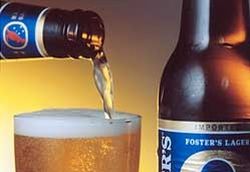 Earlier this month, the House of Commons Science and Technology Committee lived up to its name, and beamed a professor into one of its hearings. G’day Gilmore was down under, in the land of amber nectar and rich red shiraz, and by a miracle of technology he was also present in Westminster. Asked by the committee Chair whether he could hear those stuck in good ol’Blighty, G’day assured him that he could. ‘Yes, Chairman, very clearly thank you,’ he said. It was probably the clearest statement of the day.
Earlier this month, the House of Commons Science and Technology Committee lived up to its name, and beamed a professor into one of its hearings. G’day Gilmore was down under, in the land of amber nectar and rich red shiraz, and by a miracle of technology he was also present in Westminster. Asked by the committee Chair whether he could hear those stuck in good ol’Blighty, G’day assured him that he could. ‘Yes, Chairman, very clearly thank you,’ he said. It was probably the clearest statement of the day.
The occasion was the taking of oral evidence by the STC in the matter of alcohol guidelines, and as ever the troupe of temperance tut-tutters headed up by G’Day were in on the act. Their written evidence to the committee is a corker of a roll of non-sequiturs and hyperbole, a dossier of drivel with which Dr No could have much fun, arriving at the inevitable conclusion that the current and proposed guidelines for safe drinking are still being ‘plucked out of the air’, as Ripper Smith, who sat on the committee that produced the original 1987 ‘sensible limits’, once had it, even if he since tried to deny it. But instead, Dr No will simply observe that the tut-tutters have well and truly tied their knickers in a twist, as they have attempted, over the years, to iron out the semantic niceties of official guidelines, only to arrive today at a point where, to put it bluntly, the numbers still don’t add up – largely because they are still being plucked out of the air.
It goes like this. The original 1987 twenty-one/fourteen units per week limits were simple enough, but, cast as they were in weekly terms, they allowed crafty boozers to stash their daily ration in readiness for a Friday night blowout. This alleged defect was plugged in 1995, by an inter-departmental government working group, which reissued the advice in daily terms: men should not regularly drink more than three to four units a day, and women should not regularly drink more than two to three units a day.
But already the knicker elastic was beginning to twitch. Alarmed medics pointed out that the government’s new 1995 daily limits – also as it happens largely plucked out of the air – indirectly increased the weekly limits substantially, to twenty-eight units (a useful 33% increase) for men, and twenty-one units (a corking 50% increase) for women. As if that wasn’t bad enough, the lack of consensus tipped the punters off to the possibility that the scientists, be they medics or government scientists, hadn’t got a clue; and if that wasn’t bad enough, recasting the limits as daily limits carried a none-too-subtle hint that daily consumption was all in order and all above board. In contrast, the 1987 advice recommended – although it wasn’t picked up substantially at the time – two or three alcohol free days a week.
Since then, the medical tut-tutters have fought a rear-guard action. Their latest, and all said and done rather familiar guidance, aired in front of the Science and Technology Committee, contains plenty of hot talk – ‘the implied sanctioning of a pattern of regular daily drinking [by young people] is potentially extremely dangerous’ strikes their tone well – but precious little in the way of new or hard evidence. Instead, it harks back to the since lost three alcohol free days a week advice contained in the original 1987 recommendations.
And this is where the numbers really start to fall apart. For men (and similarly for women, although Dr No will spare you separate calculations), if we allow G’Day’s twenty-one units a week, and spread them over four drinking days, the average daily amount – five and a quarter units – substantially exceeds (by over 25%) the current recommended daily limit of up to four units…but if we do the calculations the other way round – starting with today’s recommended limit of up to four units a day, and allow them on four days a week – then the total, at sixteen units per week, is lower than G’Day’s recommended twenty-one units…
So – almost twenty-five years after the original report that set the twenty-one/fourteen units a week limits, we still have a confusing cacophony of guidelines that just don’t add up. Is it any wonder the rest of us are confused?
But then, Dr No has always seen setting alcohol limits as a dark art, as reliant today as it has ever been, on ‘insufficient scientific evidence’ (the phrase used in the 1987 report), and so – on Ripper Smith’s terms – on ‘figures plucked out of the air’. Dr No doesn’t for a moment deny that alcohol causes great harm, or that the setting of consumption guidelines is a legitimate matter for medical attention. But he does deplore the prostitution of alleged science into an exercise which has all the clarity of peering through a glass of amber nectar, darkly.
